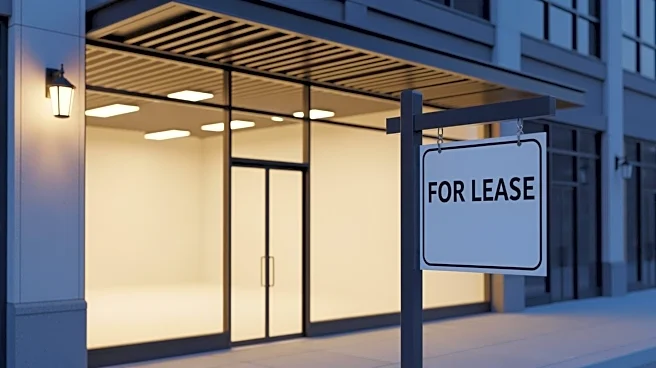What's Happening?
Several major retailers in Manhattan are either relocating or closing their stores, leading to significant shifts in the retail leasing market. Notable changes include REI vacating its long-time location at the Puck Building, Crate & Barrel moving from
its Broadway location, and IKEA investing $72 million in a new Midtown tower. These moves are creating opportunities for new retail concepts to emerge in prime locations. The market is experiencing high deal velocity, with rents rising by 16.8% in some areas. Retailers like Uniqlo, Abercrombie & Fitch, and Lululemon are expanding their presence, while new entrants like Pop Mart are securing spaces in high-traffic areas.
Why It's Important?
The relocation and closure of major retail stores in Manhattan signal a dynamic shift in the retail landscape, offering opportunities for new businesses to enter the market. This trend could lead to increased competition and innovation in retail offerings, potentially benefiting consumers with more diverse shopping options. The rise in rental prices indicates a strong demand for prime retail space, which could impact smaller retailers' ability to compete. The influx of new retail concepts may also influence consumer behavior and shopping patterns in the city.
What's Next?
As these retail spaces become available, it is expected that more retailers will seize the opportunity to establish a presence in Manhattan. The ongoing changes may attract international brands and innovative retail concepts looking to capitalize on the high foot traffic and visibility. Stakeholders, including real estate developers and city planners, will likely monitor these developments closely to assess their impact on the local economy and urban landscape.
Beyond the Headlines
The transformation of Manhattan's retail scene could have broader implications for urban development and economic strategies. The shift towards more experiential and unique retail offerings may reflect changing consumer preferences, emphasizing the importance of creating engaging shopping environments. Additionally, the trend of retailers purchasing their spaces could indicate a long-term commitment to the area, potentially stabilizing the market and encouraging further investment in infrastructure and community development.

















